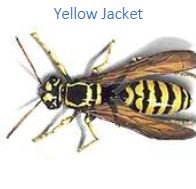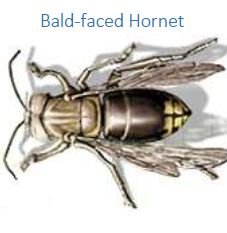 Yellow Jackets are predatory social wasps of the genera Vespula and Dolichovespula. These wasps live in nests and problems usually occur when these nest are disturbed, like during spring cleaning and readying your yard for summer. They have the ability to sting as a means of the ensuring survival. A hollow stinger is located at the rear of the yellow jacket’s body. Upon penetrating the skin, a venom is injected through the stinger. These stings can be quite painful. They can also be very dangerous to people who have developed an allergy to the stings. Unlike the bee, a yellow jacket can sting more than once. Wasps can also damage fruit when they create holes by eating the flesh.
Yellow Jackets are predatory social wasps of the genera Vespula and Dolichovespula. These wasps live in nests and problems usually occur when these nest are disturbed, like during spring cleaning and readying your yard for summer. They have the ability to sting as a means of the ensuring survival. A hollow stinger is located at the rear of the yellow jacket’s body. Upon penetrating the skin, a venom is injected through the stinger. These stings can be quite painful. They can also be very dangerous to people who have developed an allergy to the stings. Unlike the bee, a yellow jacket can sting more than once. Wasps can also damage fruit when they create holes by eating the flesh.
People often mistake bees for yellow jackets because of their coloring. However, they are very different. Bees sting once and then die, but wasps can sting repeatedly. Yellow Jackets have a shiny black and yellow body, and measure from 1/2 inch (workers) to 3/4 inch (queen). These social insects live in large colonies.

The Bald-faced Hornet, Dolichovespula maculata, is actually a large yellow jacket and not a true hornet. Bald-faced Hornets make large, pear-shaped nests that are often seen in trees after the leaves have fallen in the fall. The paper covering of the nest is made from chewed up wood or paper. They will attach their nests to trees, bushes, and sometimes even the side of a structure.
These wasps differ from yellow jackets in their white and black coloring. The head is white or “baldfaced”. They have three stripes at the end of their bodies. They are also notable larger than other species of Dolichovespula. The average adult is about 3/4 inch in length, with the queen being larger.